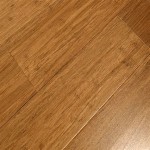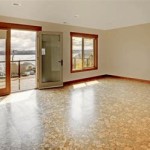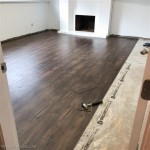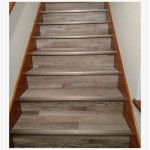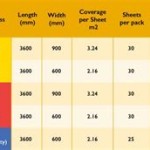How Much Do Hardwood Floors Cost Installed?
Determining the cost of hardwood floors installed is a multifaceted process heavily influenced by a range of variables. Homeowners contemplating this upgrade should understand these factors to accurately budget and manage expectations. The final cost is not solely dictated by the price of the wood itself; installation labor, subfloor preparation, and additional materials significantly contribute to the overall expenditure.
Hardwood flooring offers aesthetic appeal and durability, increasing property value and providing a long-lasting flooring solution. However, realizing these benefits requires careful planning and a comprehensive understanding of the associated costs. This article delves into the key elements that determine the final price of hardwood floor installation, providing a detailed breakdown of the expenses involved.
Type of Hardwood and Material Costs
The most significant factor impacting the cost is the type of hardwood selected. Hardwood flooring is broadly classified into solid hardwood and engineered hardwood, each offering distinct characteristics and price points. Solid hardwood consists of planks milled from a single piece of wood, providing durability and the option for refinishing multiple times. Engineered hardwood, on the other hand, comprises a thin veneer of hardwood bonded to a core of plywood or fiberboard, offering greater stability in environments with fluctuating humidity levels.
Within these categories, various wood species further influence the material cost. Common options include oak, maple, hickory, walnut, and cherry. Oak is typically the most affordable, while exotic species like Brazilian cherry or teak command a higher premium. The hardness of the wood, measured using the Janka hardness scale, also affects the price. Harder wood species are more resistant to scratches and dents, making them suitable for high-traffic areas and families with pets. The material costs can range from $3 to $15 or more per square foot, depending on the species, grade, and width of the planks.
The grade of the wood also impacts its price. Higher grades, such as select and better grade, are characterized by fewer knots, mineral streaks, and color variations, resulting in a more uniform and aesthetically pleasing appearance. Common grades, while offering a more rustic look, are typically more economical. Homeowners should carefully consider their aesthetic preferences and budget constraints to determine the appropriate grade for their flooring project.
Furthermore, the width of the planks influences the cost. Wider planks tend to be more expensive than narrower planks due to their increased material usage and potentially higher installation labor costs. Wider planks also offer a more contemporary look and can create a more spacious feel in a room. The finish of the hardwood flooring also contributes to the material cost. Pre-finished hardwood flooring, which is finished at the factory, generally costs more upfront compared to unfinished hardwood, which requires sanding and finishing on-site. However, pre-finished hardwood typically offers greater consistency and durability and reduced installation time.
Installation Labor Costs
Labor costs constitute a substantial portion of the overall hardwood floor installation expense. Installation methods vary depending on the type of hardwood flooring and the underlying subfloor. Common installation methods include nailing, gluing, and floating. Solid hardwood is typically nailed to a wood subfloor, while engineered hardwood can be nailed, glued, or installed as a floating floor. The complexity of the installation process and the expertise required influence the labor costs.
The cost of labor also depends on the geographic location and the experience of the installation team. In areas with a high cost of living, labor rates are generally higher. Hiring experienced and reputable installers is crucial to ensure a professional and durable finished product. Experienced installers possess the knowledge and skills necessary to properly prepare the subfloor, accurately measure and cut the planks, and securely fasten the flooring. This ensures that the hardwood flooring is installed correctly, minimizing the risk of issues such as squeaking, warping, or unevenness.
Subfloor preparation is a critical step in the installation process and directly impacts the labor costs. A properly prepared subfloor provides a stable and level surface for the hardwood flooring, preventing problems down the line. Subfloor preparation may involve leveling uneven surfaces, repairing damaged areas, or installing a moisture barrier. The extent of subfloor preparation required depends on the condition of the existing subfloor. In some cases, the subfloor may need to be completely replaced, adding significantly to the overall cost.
The complexity of the installation also affects the labor costs. Rooms with intricate layouts, such as those with curved walls or numerous corners, require more time and skill to install hardwood flooring. Installing hardwood flooring on stairs also increases the labor costs due to the added complexity and precision required. Decorative borders or patterns can further increase the installation time and labor expenses.
Expect to pay anywhere from $3 to $8 per square foot for professional installation. This cost can fluctuate based on factors like the complexity of the installation, condition of the subfloor, and the contractor's experience and pricing structure. Some contractors charge by the hour, while others provide a fixed price for the entire project.
Additional Materials and Considerations
Beyond the hardwood flooring and installation labor, several other materials and considerations contribute to the overall cost. These include underlayment, molding and trim, adhesives, and the removal and disposal of existing flooring.
Underlayment is a thin layer of material installed between the subfloor and the hardwood flooring. It provides several benefits, acting as a moisture barrier, reducing noise transmission, and providing cushioning for the flooring. The type of underlayment selected depends on the type of hardwood flooring and the specific needs of the space. Different types of underlayment offer varying levels of moisture protection, sound absorption, and thermal insulation.
Molding and trim are essential for completing the hardwood flooring installation. Baseboards, shoe molding, and quarter-round molding provide a finished look and conceal the gap between the flooring and the walls. Transition strips are used to seamlessly connect hardwood flooring to other types of flooring, such as tile or carpet. The cost of molding and trim depends on the material, style, and quantity required. Options include wood, vinyl, and metal, each offering different aesthetic and price points.
Adhesives are used to glue engineered hardwood flooring to the subfloor. The type of adhesive selected depends on the type of engineered hardwood and the subfloor material. High-quality adhesives provide a strong and durable bond, preventing the flooring from shifting or separating. The cost of adhesives depends on the type and quantity required.
The removal and disposal of existing flooring is another expense to consider. Removing old carpet, tile, or linoleum can be labor-intensive and may require specialized tools. Disposal fees may also apply, depending on local regulations. Some contractors include the cost of removal and disposal in their overall estimate, while others charge it as a separate fee.
Other potential costs to consider include moving furniture, renting equipment, and obtaining necessary permits. If homeowners are unable to move their furniture themselves, they may need to hire professional movers. Some installations may require specialized equipment, such as a floor sander or a nail gun, which may need to be rented. Depending on the location, building permits may be required for hardwood flooring installation. Failure to obtain necessary permits can result in fines or delays.
Unexpected issues discovered during the installation process can also impact the final cost. For example, hidden damage to the subfloor may require additional repairs. Asbestos abatement may be necessary if the existing flooring contains asbestos. These unforeseen issues can add significantly to the overall expense. It is always advisable to have a contingency fund to cover any unexpected costs that may arise during the project.
Ultimately, accurately assessing the cost of a hardwood flooring project requires careful consideration of all these factors. Obtaining multiple quotes from reputable contractors and thoroughly reviewing the details of each estimate is essential. This allows homeowners to make informed decisions and avoid unexpected surprises during the installation process. Understanding the nuances of material choices, labor costs, and additional expenses ensures a successful and cost-effective hardwood flooring upgrade.

How Much Does Hardwood Flooring Cost 2025

Hardwood Flooring Cost 2024 Per Square Foot Mk

Cost To Install Hardwood Flooring Floor Fixr

Hardwood Flooring Installation Costs 2024

Cost To Install Hardwood Flooring Floor Fixr

How Much Does Flooring Installation Cost 2025

How Much Does It Cost To Install Hardwood Flooring

Wooden Flooring Cost Breakdown 2025 Checkatrade

Hardwood Flooring Installation Cost

The Cost Of Installing Hardwood Floors A Guide For Homeowners Architects Diary
See Also
